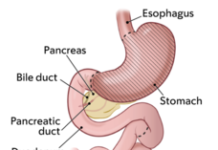With hospitals scaling back offered procedures and the fear of contracting COVID-19 in hospitals, many people have been forgoing annual health screenings throughout the pandemic. Among those procedures being avoided is mammograms. A recent study out of California found that this year, women have been less apt to get their mammograms and more apt to receive a diagnosis in the later stages of the disease. Doctors are using this information to encourage women not to put off this important preventative tool.
A study presented at the San Antonio Breast Cancer Symposium last month showed that during the shelter-in-place stretch last spring in California, the number of new diagnoses at the Kaiser Permanente System was down 64% compared with the same time period in 2020, from 703 to 250. Dr. Annie Tang, researcher with Kaiser’s Northern California Permanente Medical Group Breast Cancer Collaborative, says this lead to worries that women who would have otherwise been diagnosed, weren’t.

Tang explains there were changes put in place for the pandemic, saying, “Breast cancer guidelines were developed within our large integrated health care system of 22 hospitals, all outreach for mammography screenings were held but women who wished to have screening were still accommodated, elective surgeries were stopped, and cancer surgeries were continued.”
Of those who were screened and diagnosed, there was an increase in symptomatic cases, advanced stage cases, and aggressive cancers compared with 2019.
In light of worries about how the pandemic has impacted breast cancer diagnoses, health care providers across the country are urging women to continue to stay on top of health screenings.
Troy Koch, a radiologist at St. George Regional Hospital in Utah, says the trends of the Kaiser study are present in his facility, as well.

He urges women, “Don’t delay for COVID. We’ve seen some patients in the spring and diagnosed some cancers that we probably would’ve diagnosed months sooner.”
Oncologist and genetics specialist Margaret Van Meter, who also works with the Intermountain Healthcare system in Utah, says those without symptoms could look into telehealth meetings for a consultation on their risk. Only testing and treatment need to occur in the hospital. If you find a lump, though, you should go immediately.
The American Cancer Society says nationwide, the vast majority of women are not getting their mammograms right now.
Dr. Carmen Guerra, a national board scientific officer with the American Cancer Society, says, “It’s plummeted down to about 10% of what we normally do. So that’s a 90% decline. Our grave concern is that we are not diagnosing cancers that are out there early when they are most treatable.”

She says this means health care professionals need to brace themselves for a surge of later-stage, advanced cases. The further the disease progresses, the less treatable it is, so outcomes for these new patients may not be so good.
This is something that could be avoided if women go in to get screened when they’re supposed to, which health care providers say is very safe.
Article continues below
Our Featured Programs
See how we’re making a difference for People, Pets, and the Planet and how you can get involved!
Dr. Guerra explains, “Please schedule your mammogram. The hospitals, the clinics, the mammography centers have taken completely different protocols to make mammographies safe.”
The American Cancer Society recommends that all women between 45 and 54 get a mammogram yearly, but they say those 55 and older may choose to wait up to two years after a normal mammogram, provided they are at average risk.

![]()
Provide Mammograms
Support those fighting Breast Cancer at The Breast Cancer Site for free! →
Whizzco Source






